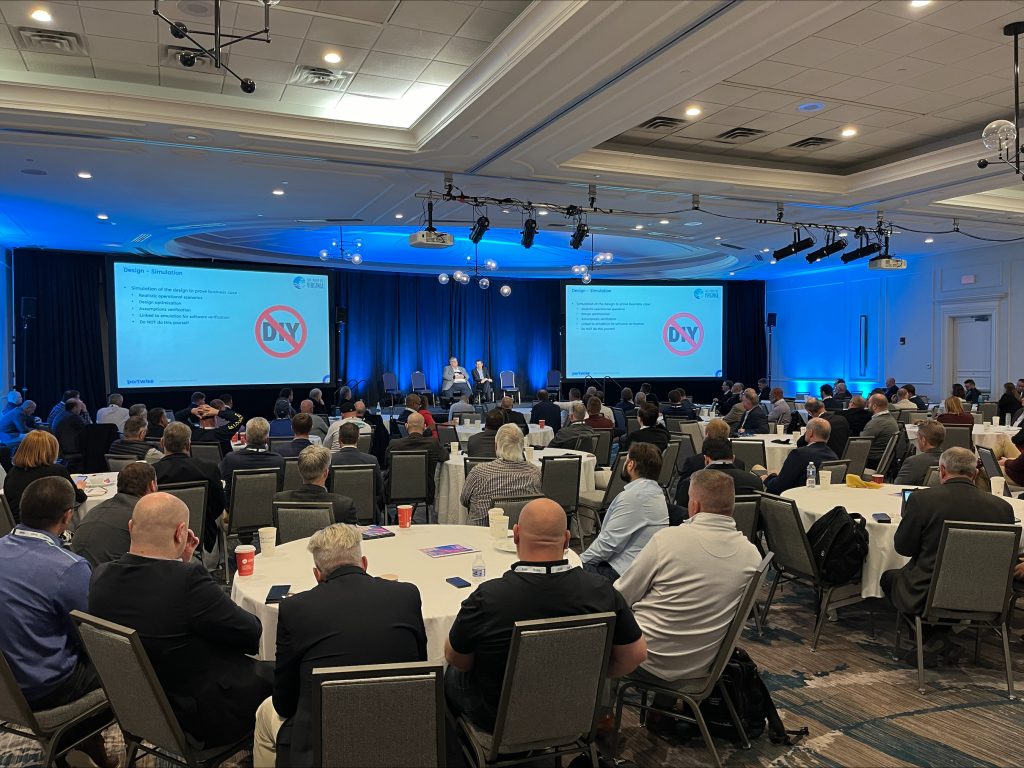The ASC yard vs. the transhipment factor
The journey of the Port of Virginia
In a recent keynote (CTAC North America, 2023 in Norfolk), Rich Ceci, Senior Vice President of Technology and Projects at the Port of Virginia, and Yvo Saanen, MD at Portwise, presented lessons learnt from 20 years of terminal development in the Port of Virginia. This journey – which led to the first implementation of ASC’s in the US – started in 2004 with design work, evaluating a traditional RTG terminal with (then) still new technology in the form of semi-automated stacking cranes.
Sizing the ASC Yard
In determining the right configuration (length, width, height) of an ASC block – meanwhile we see them ranging from 28 long – 59 long, 6 – 12 wide, and 4 – 6 high so choice enough – a critical factor is how much transhipment is expected.
It is obvious that with an increasing transhipment factor, there is a decreasing volume handled at the landside of the block (down to zero in case of 100% transhipment). This translates into 2 demands towards the “ASC yard”:
- The waterside handling capacity
- The landside handling capacity
In addition, the ASC yard needs to provide enough storage space (the 3rd demand). Depending on the transhipment factor, the block dimensions are determined by either of the 3 demands. In below figure this is visualized:
- Up to 50-60% transhipment, the landside is the critical demand, which determines the block size.
- From there till about 80% transhipment, the storage demand is determining, and from there onwards, it’s the waterside handling capacity.

Local circumstances determine
Now, the exact points where one demand takes over as critical demand depends on the local circumstances. The distribution of volume across the week, the targeted waterside berth & crane productivity, the dwell time and peak factor all play a role (so above figure is an example, based on “typical” local circumstances). However, in all cases, a similar pattern can be observed.
It also means that the focus on improving throughput capacity (if that is the limiting factor), can either be on the landside (think of better spreading during the day, or increasing the handling speed of the ASC), in storage (reducing dwell time), or at the waterside (again improving the handling speed of the ASC, or accepting a lower QC productivity).
 Rich Ceci and Yvo Saanen on stage during the CTAC North America Conference in 2023
Rich Ceci and Yvo Saanen on stage during the CTAC North America Conference in 2023